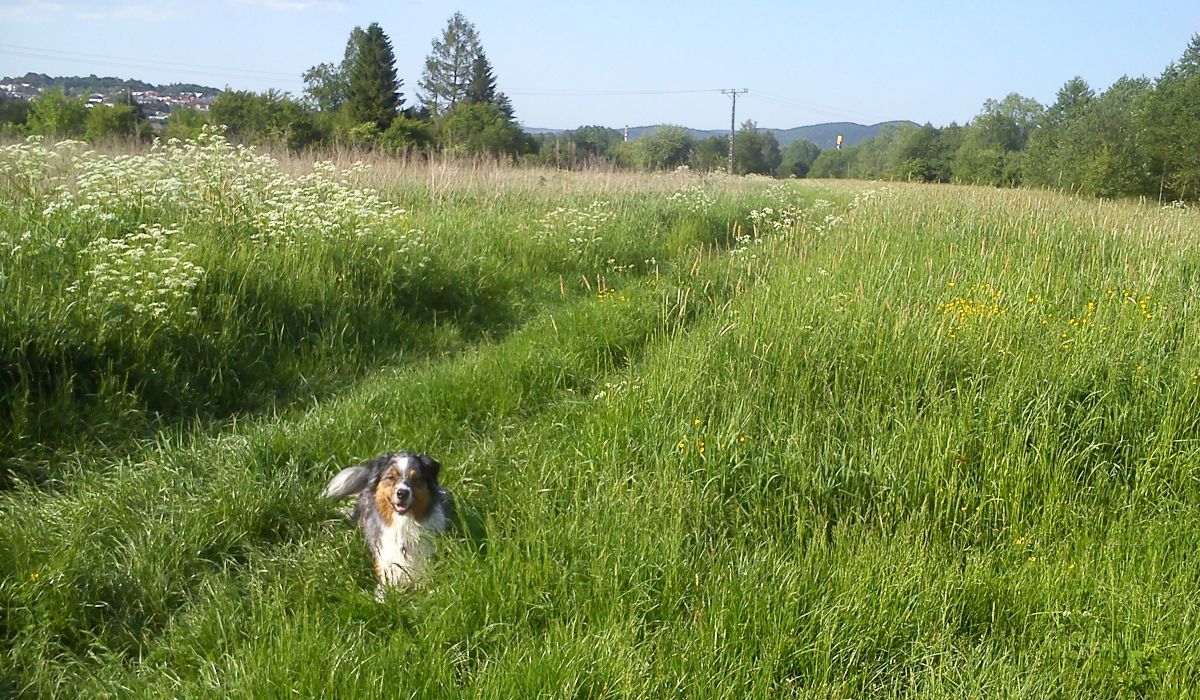Ethics, electricity, dog collars and fences
About confluences and discrepancies, moral and scientific aspects. About electric collars and fences.

In February 2020, the distribution and usage of dog collars which apply a shock for disobedience was officially banned in the UK. The legislative decision was based on public consultations (DEFRA, survey) and previous tests by Lincoln University for DEFRA. The research involved 3 groups of adult dogs being problematic in the strict spectrum – casual recall, chase recall, sheep worrying – assessed during 3 months of professional behavior modification training at 5-day sections
- Trainers using electric collars (ACME), using them in training sessions
- Trainers using electric collars (ACME), NOT using them in training sessions
- Trainers NOT using such tools (APDT).
Behavior (ethogram context) and cortisol level (stress) were observed. Researchers reported signs of discomfort in response to an active or worn electric collar, and stress hormone fluctuations.
Another study from a decade before involved 2 groups of police dogs (Netherlands)
- Dogs trained with an electric collar
- Dogs trained without electric collars.
Reactions and behavior during training sessions were observed (traditional training methods, corrections, pressure). Researchers confirmed pain signals after electroshock was sent by the collar (dog reactions) and general distress of trained dogs (behavior related to the training place). The study authors suggested to check an electric impulse distributor influence on the canine predatory behavior, being driven by instinct, deprived of the emotional context.
Such behavioral sequenced behavior distinguish a wild predatory animal – optionally free-ranging or stray domestic ones' predation – beyond control (vide gray wolf) or triggered out of the human control (unleashed and/or village dogs).
- Once an inflexible pattern behavior has been initiated, the application of a strong – i.e. painful – impulse seems to be necessary.
- Adrenaline blocks the pain receptors in case of instinctive avoidace of a sudden, undefined danger (emotional relief just after the escape, a safe distance is reached).
Electric fence – the so-called "electric shepherd" – let a hunting predator freely decide as an option to resign from re-experiencing the electric shock, without taking space away or any distance management. The same way it works on fenced livestock, cattle and pastoral dogs – they do not leave the pasture after their aversive experiences made them stay away from the wire line.
When touched, an electric wire should send clearly painful, but short-lived electric shocks
- to reduce uncontrolled attacks on fenced animals, to a minimum → in effect, to prevent successful hunting on the pasture.
- to reduce the fence forcing by protected animals, to a minimum → in result, to prevent successful roaming out of the pasture.
The domestic dogs, as a species, remain evolutionary focused on cooperation close to a human handler, so forcing them to do anything should not be prioritised.


Types of dog training devices available to manipulate electroshocks
- Remote controller → behavior monitoring → emission of sound or other unpleasant stimulus, in the absence of the trainer / dog owner
- Activated by unwanted behavior presentation → autoresponder → electric collars (including vibrations on barking) and electric fences.
Sent electric signals (in theory), constant, in general
- LLES → weak, low signal → unpleasantly disturbing (warning)
- MLES → moderate signal → impedes, should scare (punishment)
- HLES → severe, high signal → 'acceptable' physical / emotional pain (reaction stopped).
Parameters (in practice), variable, individual
- Dog nature → breed / type (some have an increased threshold for pressure, pain), size, type of coat (resistance, conductivity), innate physical / emotional resistance (appearance, temperament)
- Emotional state (in critical situation) → stress (cortisol level), frustration (pressure tolerance), fear[1] (adrenaline / noradrenaline), opioids, diet, health condition (well-being, treatment / supplements)
- Environmental influences (mood) → weather conditions (temperature, humidity, air pressure), perception of separation / isolation, awareness / unawareness of limits.
The consequences of the electric collar being introduced are not easy to be precisely predict – they're the result of an internal and external factors combination, both predefined (instinctive, inherited by ancestry) and individually determinated (single case behavioral analysis).
No margin for freely self-controlled distance (avoidance, safe zone), when every decision is made remotely.
Considering the dog – a working, companion animal – in the projection of electroshock training
- Too strong impulse → the survival strategies activation[2] → short-term → emergency response (HPA axis, stress, corticoids) or panic reaction (amygdala, adrenaline)
- Moderate impulse → demotivation[3] → homeostasis instability (limbic system, emotions) → long-term → mood changes (internal conflict), anxiety (hypersensitivity, reactivity, state of alert), frustration (chaotic offering certain learned behaviors on command)
- Too weak impulse → no reaction → habituation started.
Fake success, where the dog learns nothing (vide pseudo recall, no generalisation)
- No reaction to recall → HLES (painful electric signal) → immediate dog reaction = freeze (immobility from the five basic survival strategies)
- Moment of reaching for connected memories → touch (collar on the neck), visual, auditory, smell (i.e. for any signals preceding the aversive stimulus) → random behavior associated with the situation (cause and effect).
Hence, not far to conclusion that in specific conditions, fixed by a "correction" every time when the established line was forced, the dog would stop leaving the yard or the other restricted area; however, the electric collar puts additional pressure where the "electric shepherd" is enough, adding redundant pressure or remote mistakes
- Recurring failure frustration (trainer) may affect the frequency to reach for inadequately strong electroshocks being sent to discipline the dog.
- Inconsistent, confusing nomenclature may affect the selection of inadequate tools for casual training / nurture (vide "e-collar", "invisible fence").
Implications concerning introverted dogs (shine, soft) affected by resignation or extroverted ones (reactive, ready to confrontation) still resisting or yet aggressive (multiple categories), mark the crisis point when a case of disordered dog requires a dog behaviorist.
In the 80's, Karen Pryor[4] published her pocket guide, where she described the concept of comprehensive training based on positive reinforcement – the method opposite to the traditional positive punishment based (rigorous) – related to progressive knowledge about animals (cognitive ethology) up-tu-date and behaviorism itself (classic and operand conditioning).
- Reward motivates → increases probability of the behavior to be repeated (active cooperation). Lack of reward (ignored behavior) is a form of punishment or motivation in right circumstances (creativity).
- Punishment demotivates → reduces probability of the behavior to be repeated (obedience).[5] Lack of punishment (aversive stimulus withdrawal) brings relief, without suggesting alternatives (as long as there is a chance that an animal feels its influence on the environment).
Primary senses – smell, sight, hear, touch, taste – take part in the creation of memory traces (memories), and their consolidation by creating a neural pathway – conditioned reflex, an automatic response to a stimulus – right after linking sensory experiences to remembered environmental associations. The engram is created.
The progressive 'positive' trainer starts with a pure 'blank card' and a stable quadruped
- Fresh, single neural pathway → conditioned → remembered → a new (positive, wanted) association to be created.
It is for example an essential element of the socialization / habituation process during the most important developmental phase of puppy management, then preserved in young dogs by proper nurture / training.
When training methods must change to 'positive' as opposite to 'traditional' ones, behavioral therapy becomes complicated by dividing the training process between a pair of parallel
- Previously formed → counter-conditioned → to be forget → positive association created to supersede other old (negative, unwanted)
- Fresh, single neural pathway → conditioned → remembered → a new (positive, wanted) association to be created.
Once saved, an engram cannot be overwritten, it can only be displaced (blurred) by another memory trace (currently preferred). To forgive does not mean to forget.
[1] Fear is an emotion, even if a primary one.
– Fear → instinctive reaction → objective response to the stimulus (5F)
– Anxiety → emotional state → subjective sense of being threatened (BIS)
[2] Flight, Freeze, Faint, Fidle about, Fight → survival strategies which are triggered automatically (reflex) in a situation treated as extremely dangerous.
[3] Emotional intelligence context. Two balanced organic systems – the Behavioral Inhibition System and the Behavioral Activation System – believed to regulate susceptibility to punishment (BIS) and reward (BAS).
[4] A dolphin trainer (original training program); later initiator of the Karen Pryor Academy (together with Ken Ramirez, via KPCT Ranch). As a behavioral biologist, she popularized the clicker as a marking tool in the process of conditioned behavior modification (Karen Pryor Clicker Training). Mentioned publication title is "Don't shoot the dog".
[5] Learned helplessness is sometimes mistaken with discipline and obedience.
References:
Electronic training collars for cats and dogs in England - Summary of responses and government response; Department for Environment, Food and Rural Affairs (2018)
The welfare consequences and efficacy of training pet dogs with remote electronic training collars in comparison to reward based training; group work (2014)
Training dogs with help of the shock collar: short and long term behavioural effects; Schilder, van der Borg (2004)
Clive Wynne, Monique Udell; "Animal Cognition" (Polish edition, 2015)
Animal Expert 23/2021, 24/2021 (by Beata Leszczyńska, Piotr Leszczyński)
